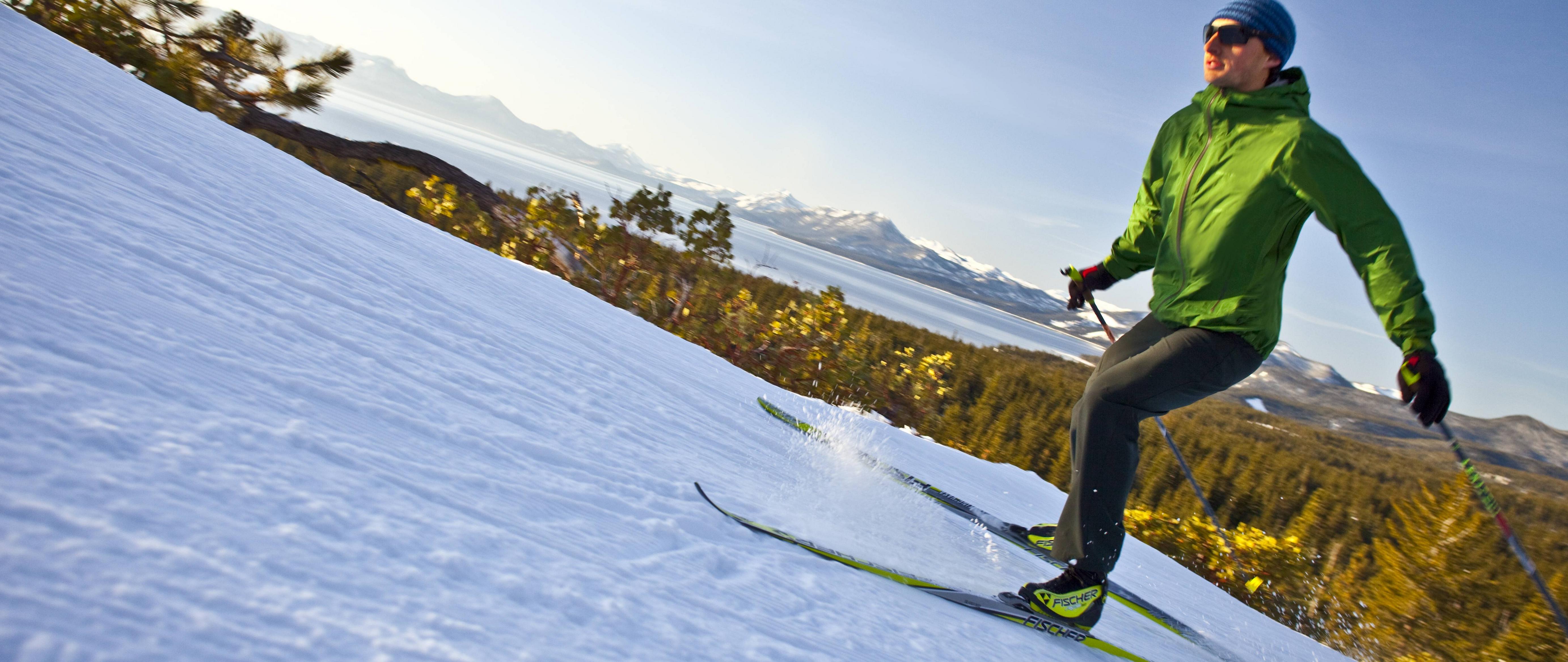
A private ski instructor can be a skilled and experienced skier you hire to teach your skills. He or she will guide you to the right level, teach you correct form and technique, and help you learn faster.
You should hire a private ski instructor as early in the season as possible. This ensures that you have the best instructor available and doesn't miss any important events.
For a complete list of available instructors, you should call the ski resort reservations early November. Next, request to book a lesson with the instructor you have selected. The resorts will match you up with the instructors who are most likely available for that month and send you a confirmation.
A private ski lesson can be beneficial for most people, whether they're new to the sport or have been skiing for a while. Skiers with a natural ability to quickly pick up new information and apply it efficiently will often do better in private lessons than they would in group lessons.

If you're outgoing, a group ski lesson might be a good choice. It's a great chance to get to know other people and have fun. You will be able to share your passion for skiing and snowboarding with others.
On the other hand, if you're shy or just don't like small talk, you might prefer a private lesson because it allows you to focus on your instructor and learn more at your own pace. This means you can skip lessons that are too difficult for your skill level, which allows you more time to learn the skills that are important to you.
A private instructor will save you money on equipment and ski lessons. This is a great option if you have a family that doesn't have any equipment, but wants to try skiing or snowboarding together.
Private ski instructors will generally cost more than group instructors, but they will provide more personal attention. In addition, you'll have access to expert instructors that can teach you more advanced techniques.
Hunter Mountain offers many lessons for snowboard and skiers to improve your skills. These lessons include beginner and intermediate programs, as well expert ski lessons.

Ski resorts offer a range of development programs and clinics that will help you to become more involved in the sport. These programs will help to improve your ski and snowboarding skills in order to have the most enjoyable time possible on the mountains.
Hunters Mountain offers ski and snowboarding lessons as well as family fun programs. You can also explore the mountains, and take in the stunning views of Lake Tahoe.
FAQ
What amount of luggage should I bring?
The length of your trip determines how much luggage you should take. Hand baggage is usually limited to 20 kg if you travel by plane. If you're traveling by bus or train, you'll need more space.
When you arrive at the airport, you will be given a form to fill out with details of your flight. This will include information such as the weight of your bags and whether you require assistance when checking them in.
Before you leave for work, make sure to check it. You could end up spending hours waiting for your luggage to be checked while others check theirs.
Because you never know what could happen, it is better to travel light. For example, if your bag gets lost, you won't have anything to wear.
What can I pack in my suitcase?
At least two pairs of shoes should be on your feet at all times. Two pairs are needed for daily walking in the city and two for vacation.
Make sure you have enough clothes to cover both. You should also ensure you have enough clothes for plane travel.
Consider bringing some clothes if you are planning to stay somewhere for a longer time. You won't feel awkward when you shop for new clothes.
Comfortable shoes should be worn if you are taking the bus or train. You'll also need to bring a spare set if you are driving.
You'll also need to pack plenty of toiletries such as soap, shampoo, toothpaste, deodorant, and moisturizer.
Finally, don't forget a flashlight, insect repellents, sunscreen, sunglasses, a hat and a first-aid kit.
Don't forget to put all these items in one bag rather than trying to fit them into several different bags. You'll save both time and space.
And finally, don't forget to pack a small towel and washcloth. You'll be able to use them when you take a shower after a long day.
What should you do the first time you arrive at your travel destination after you have arrived?
Always have a plan in place for when your arrive at a new location. This helps you to know what to expect and where you should go next.
To avoid missing anything, you need to plan ahead.
For instance, if your trip to a city lasts more than one hour, research which landmarks, museums, and parks you'd like.
Also, you may want to look into getting a map of the area and reading up on the region's history.
How do you travel light?
When packing for a trip, there is no right or wrong answer. But here are a few tips to help you choose what to bring along.
-
Only bring what you truly need.
-
Only bring what you are going to wear.
-
Don't buy too many.
-
Be sure to have plenty of space in your suitcase
-
Double-check everything that you have packed.
-
Enjoy free storage
-
Reusable water bottles can be used instead of buying bottled.
-
Instead of carrying a suitcase, use a backpack.
-
When possible, walk or cycle instead of taking public transport.
-
Select the right bag size
-
Be careful not to carry large items.
-
You should be prepared for every eventuality
-
Leave nothing behind.
Where should I store my luggage?
There are many choices. You can use lockers at airports as the most common option. These are normally located near the security area. These lockers cost $5-10 per day depending on their size.
You could also rent a storage facility. These units are often located in large shopping centers or hotels. Some places offer discounts if multiple units are rented together. Prices can vary.
A third option is to hire a porter. A porter will help carry your luggage from the carousel to your room. You pay a small fee each time he helps you.
Statistics
- That's an 18% jump from 2019, the previous record year. (travelandleisure.com)
- According to Maori legends, this park holds 14 fjords that were all carved by a giant stonemason with an adze. (busytourist.com)
- Pack sweaters, jackets, and underwear in reusable compression bags creating up to 75% more space in your luggage. (wikihow.com)
- They're also likely to offer babysitting services, in case you'd like to have dinner one night after 7 p.m. (travelandleisure.com)
- You can use compression sacs or cubes to reduce the volume of your clothes by up to 80%—this is especially convenient for bulky items such as sweaters and jackets. (eaglecreek.com)
External Links
How To
How to plan for your next vacation
Booking flights, hotels, car rental, and activities are just a few of the many aspects involved in planning a trip. This includes important considerations like budget, destination and weather forecast.
These points are essential to keep in mind when you plan your next vacation.
We've created a step by step guide to help you plan your next holiday. This guide is based on customer feedback and our experience. We hope this guide helps you to plan your next vacation with minimal hassle.
Steps:
-
Plan your Budget - This is the most important step to take when planning for a trip. Before you can start planning where and what you will do, you must first know how much you are willing to spend. If you don't have the money, your plans may be cancelled.
-
Book Your Tickets - Once you've decided on your budget and set your priorities, booking your flight tickets is the first thing that you should do. Find the best price and lowest flight deal. Make sure to check for special offers during peak seasons. These deals may save you money.
-
Pick Your Destination. Once you've booked your tickets, the next step is to decide where to travel. Multiple factors play into the decision of where to go, climate (when you can visit), culture (how friendly they are) and cost (how expensive it is).
-
Finding Accommodations - Once you have chosen your destination, it is time to find accommodations. You have many accommodation options, from hostels and luxury suites to choose from. Your needs and preferences will determine the type of accommodation that you choose. If you need to be near the city center, a hotel may not suit your needs. On the other hand, if you prefer quiet places away from crowds, a homestay may suit your requirements better.
-
Select Activities and Attractions. Now, after you've selected your accommodation it is time to pick the activities or attractions that you would like to add to your itinerary. You can choose to include only certain activities depending on how long you stay. Or, add multiple new activities throughout the trip.
-
Determine Schedule - Now that you've selected the activities and attractions you'd like to include, it's time to determine your itinerary. It is important to stick to a schedule in order for maximum enjoyment of your trip. It's okay to be flexible and enjoy your vacation more.
-
Create itinerary – This allows you to organize all of the details for your trip. From flights to accommodation, activities to restaurants, you should write them down and create a list of things to remember.
-
Research Online - Do your research online before you travel. Review and read testimonials to learn what travelers have to say about a destination. This way, you will be able to plan accordingly.
-
Be Light - Don't pack too much. This is the biggest mistake people make when packing. Instead of bringing five sets of clothes, bring three. Wear clothing that is appropriate for the climate you are visiting.
-
Make sure you are prepared - Get everything organized before you head out on your trip. Don't waste time searching for important documents in transit.